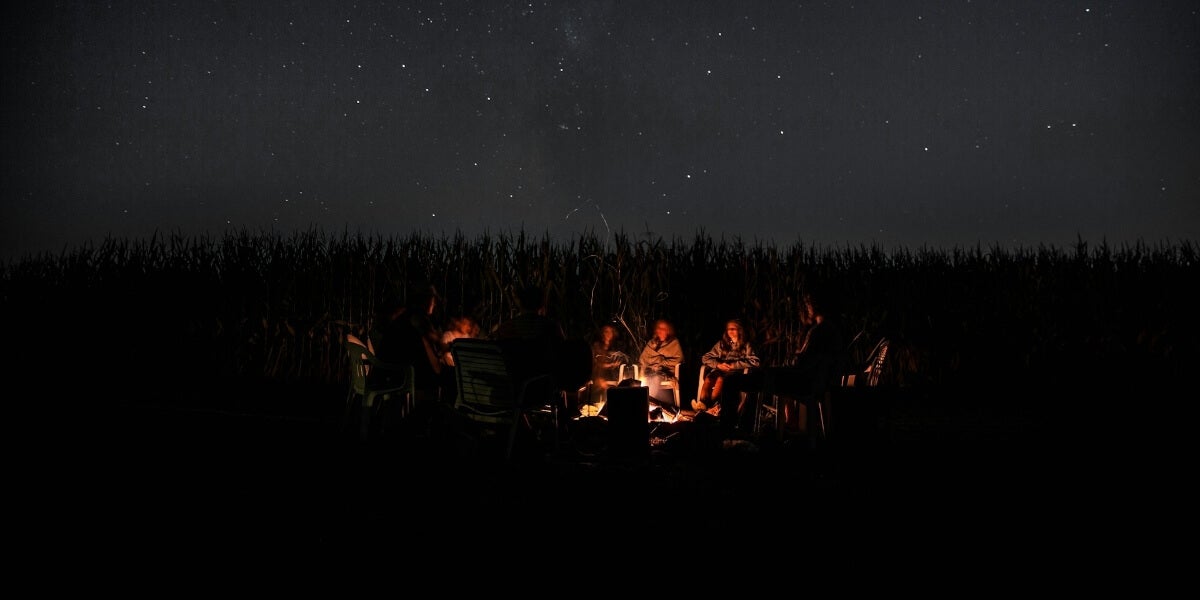If you’ve been out in the bush long enough, you know the difference between a fire that quietly gets the job done and one that gets you spotted or worse. Whether camping or hunting, a smokeless fire is the mark of true bushcraft skill. Clean-burning fires are cleaner, safer, more discreet and better for your health. Most people make the same common mistakes that cause a smoky mess. Large, smoky fires can result in long-term damage to your lungs. They can also compromise your location in survival scenarios and chase off wildlife. Consider whether you’re making these mistakes in your campfire assembly and learn solutions to help you build a responsible fire pit like a pro.
1. Choosing the Wrong Wood
Just because a branch snaps in half doesn’t mean it’s dry enough to burn cleanly. Moisture content matters if you’re avoiding white plumes.
Use only well-seasoned hardwoods like oak, maple and hickory. These have hotter combustion and produce far less vapor. Avoid softwoods — like pine — which tend to have a greater moisture content. If you don’t have a choice, split them and dry them as much as possible before use.
2. Following Poor Pre-Burn Prep
Throwing together a few sticks and lighting up is a rookie mistake. A smokeless fire starts with a good base.
Dig a Dakota fire hole or trench to allow for controlled airflow. The two holes — one for the coals and one for intake — channel oxygen efficiently so the flames can breathe. A basic elevated grate or stone windshield can minimize smoke by improving combustion.
3. Starting Monster Fires
Less is more when it comes to smoke and heat. With a large blaze, the flames may consume oxygen faster than they can access it, causing smoldering instead of combustion.
Keep your fire small and focused to yield a hotter and cleaner flame. A smaller blaze also optimizes fuel, which is important if you have limited supplies. Some camping facilities only allow small cooking fires, not uncontrolled stacks and wildfires. Always check the local ordinances and get a burn permit to keep your camp legal.
4. Choking the Fire
Fires need air to burn, but you shouldn’t flood it with oxygen and cause it to snuff itself. Campfires require a delicate balance of airflow. Insufficient ventilation creates smoke.
Design a draw — a U-shaped trench or rock ring with gaps to direct oxygen. Air should enter near the bottom, and exhaust fumes should go out the top. If you use a Dakota fire hole, ensure the intake tunnel is angled correctly. You’ll lose all pressure if it’s too steep, but if it’s too shallow, you’ll choke the fire.

5. Burning Debris and Trash
Materials like newspaper, leaves and damp pine needles are instant smoke triggers. Even natural kindling can release nasty fumes or carcinogens when burned, which can lead to long-term health issues like lung cancer. With around 130,000 Americans dying of lung cancer yearly, it’s worth investing in safe outdoor firepits and avoiding smoke inhalation.
Use clean, dry fuel. If you need to start with tinder, use dry bark, twigs or cotton balls coated in petroleum jelly.
6. Stifling the Flame
Fire takes time. If you put a grill, kettle or pot on it too early, you’ll cut off airflow to the coals, creating smoke as the embers start to suffocate.
Let proper flames form before covering them. When placing cooking vessels, leave a large enough gap for continued ventilation.
7. Using the Wrong Size Materials
If you started with twigs, don’t jump straight to logs. Swapping to larger fuel sources will cause incomplete burns.
Work systematically with the finer tinder. Then, add pencil-sized kindling, followed by thumb-sized twigs and wrist-sized branches. Let each stage fully combust before upgrading.
8. Sleeping on the Job
A fire that burns low while you’re fishing or napping requires careful rebuilding. If you dump fuel to try to save it, you’ll have a smoking pit. A campfire needs management, so keep a watchful eye for safety and prevent having to force it back to life.
Shift a few smaller branches to expose new surfaces to air for increased combustion. Monitor the flame color. Blue and clear indicate you’re getting a hot and clean burn. Orange and flickering flames show the fire is dying.
9. Forgetting the Weather
Humidity, rain and wind all affect your blaze. Pretending your fire will behave the same in every season or region sets you up for failure.
Use extra kindling in high humidity to burn hotter and build a partial cover in windy or wet conditions. A campfire can lose up to 80% of its heat upward, so use a stone windbreak as a makeshift closed fireplace to retain more heat.
Creating Smart Smokeless Fires
Be smart, and you’ll have a clean, efficient campfire that’s low profile, healthy and useful. Mastery of fire shows your skill and gives you an edge. That edge may be the difference between survival and disaster in the wild. Campfire assembly shouldn’t stress you out.
The post 9 Mistakes You’re likely making during your Campfire Assembly appeared first on AllOutdoor.com.


